#knitting tutorials
Explore tagged Tumblr posts
Text
Steeking can be very scary. The concept of taking a pair of scissors to your knitting goes against what you might think makes sense!
And yet, lets take securing the ends of your steek one step further, with the double-fold back steeks, thanks to the TECHKnitter Blog!
16 notes
·
View notes
Text
a link to a tutorial by Naomi Pankhurst on how to make a really nice hexagon mesh. This blog also has a lot of interesting tutorials, patterns, and other stuff in it that are worth checking out as well.
93 notes
·
View notes
Text
KAYNANAM BAYILDI EN KOLAY GELİN YELEK ÖRGÜ MODELİ bebek yelek örgü modelleri crochet knitting
kolay örgü modelleri , saç , bebek , bayan , erkek , değişik , farklı , KAYNANAM BAYILDI EN KOLAY GELİN YELEK ÖRGÜ MODELİ bebek yelek örgü modelleri crochet knitting tunican knitting crochet, bebek patikleri yapilişi açıklamalı örgü modelleri, örgü başlama teknikleri, istiflenmiş örgü yapısı , bebek battaniyesi örgü modelleri şişle yapilişi 👉Kanalıma destek olmak için Abone ol :…
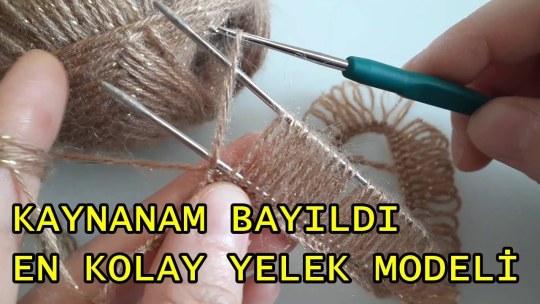
View On WordPress
#battaniye modelleri#bebek battaniye modelleri#bebek battaniyesi örgü modelleri şişle yapilişi#crochet#crochet for beginners#en güzel bebek battaniye modeli#how to crochet#how to crochet for beginners#kaz ayağı örgü modeli#knitting#knitting for beginners#knitting podcast#knitting tutorials#kolay bebek battaniye modeli#learn to crochet#örgü#örgü başlama teknikleri#örgü modeli#Örgü modelleri#örgü örerek para kazanmak#örgü patik yapılışı#TUNİCANA#tunus işi
0 notes
Text
🧶 Cow hitch increase
Unlike all other single-stitch increases I know, this one is perfectly symmetrical. I’ve been seeing it a lot in my feed lately, so I thought I’d share it. Haven’t tried it yet in a project though.
It mimics the structure of a cow hitch knot - hence the name.
🎥 🧶 👀✨
341 notes
·
View notes
Text

Everyone has been discussing these lately! I know everyone's been sharing them on a rant post I made that weirdly got more notes than I expected, but I wanted to make one post to compile all the MLP Vintage Butterick Patterns we have to document them!
Please check it out Here on my website where I have uploaded all of the images, provided additional information, and credited every single person who has helped me by scanning or sharing their information!
You can make: Christmas ornaments, plushies, or cute sweaters and cardigans.
All of these patterns are Officially Licensed g1 patterns! Enjoy and feel free to share with me if you make any of these fun crafts!
515 notes
·
View notes
Text
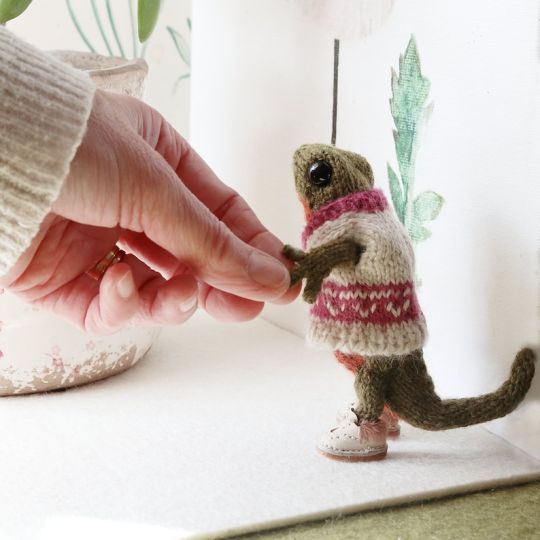
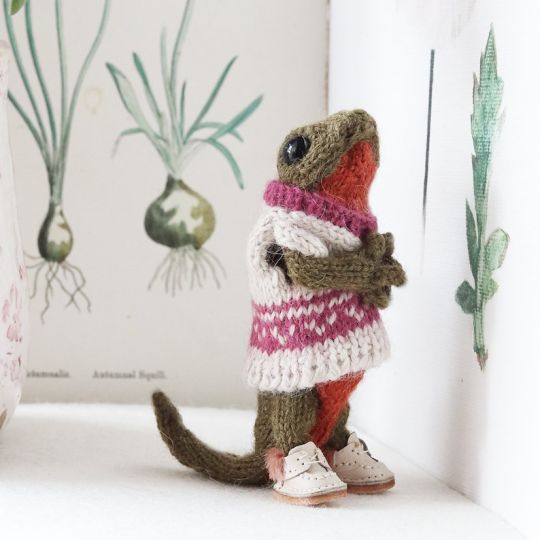
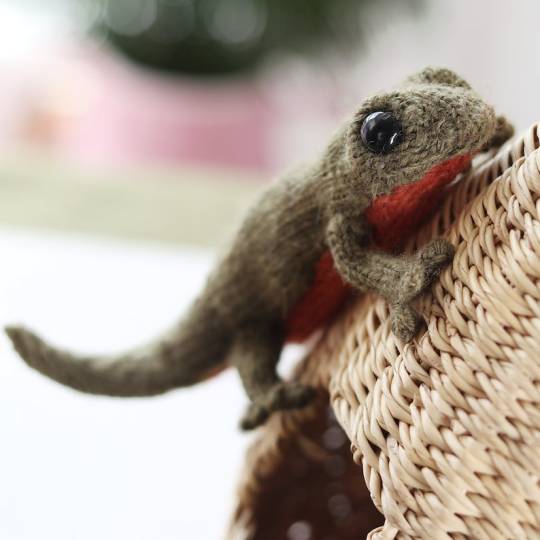
Newt Knitting Pattern by DotpebblesKnits
#DotpebblesKnits#newt#knitting pattern#knitting patterns#knitting pdf#knitting download#knitting tutorial#pdf download#pdf pattern#pattern pdf#craft#diy
590 notes
·
View notes
Text

Lizard hair clip crochet pattern pdf
#crochet#crocheting#pattern#yarn crafts#amigurumi#craft#fiber crafts#knitting#yarnblr#handmade#tutorial
74 notes
·
View notes
Text
Quick tutorial for howl's jacket (i am trying at least)
I am doing my best to explain my technique under the cut:
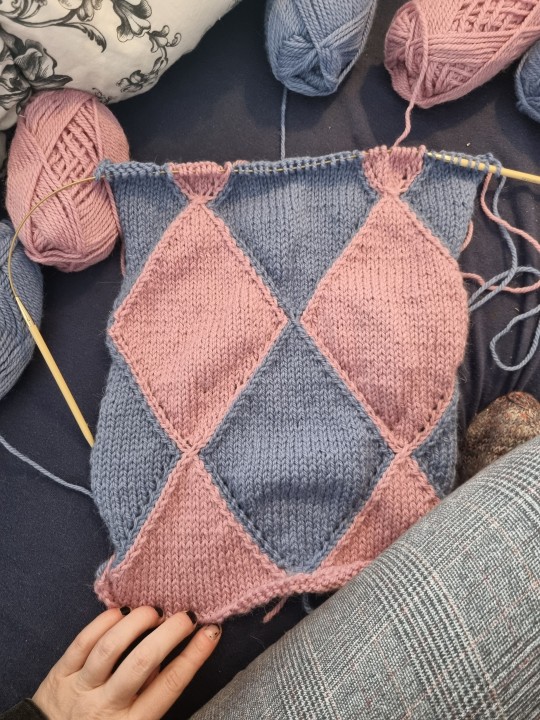
Alright so
I am basically combining intarsia knitting with increases/decreases on the edges
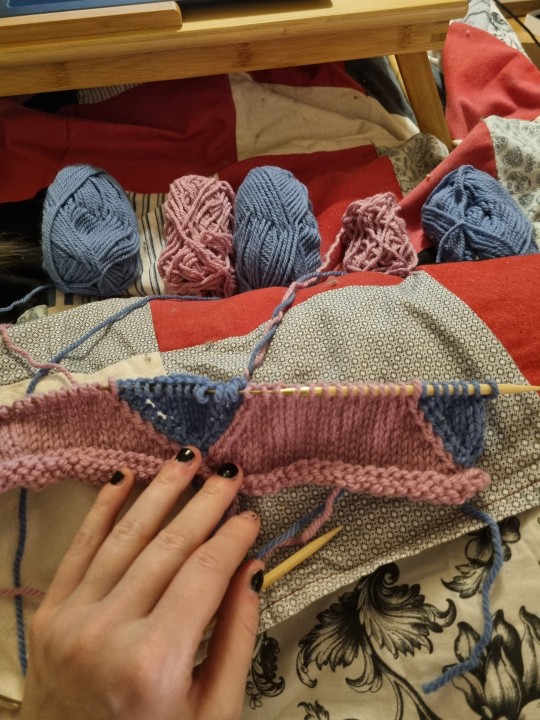
I start out like this, with the five yarns in order in front of me
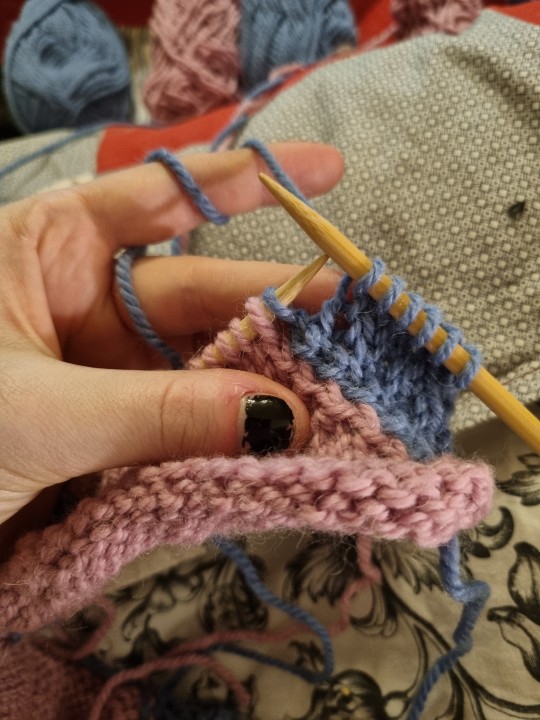
Knit until the last stitch in the first color

Make one stitch (i knit one stitch out of the space between the second-to-last and last stitch)
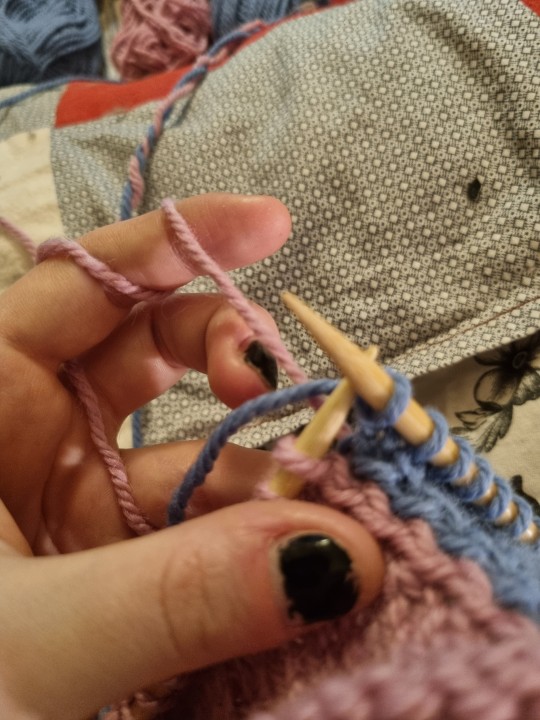
Knit the last stitch and change color (make sure to twist the yarns so the fabric is connected)

Pick up the first stitch, knit the second and slip the first over it (this creates a leftleaning decrease)
At the other end knit 2 stitches together (creates a rightleaning decrease) and switch colors again
Here knit the first stitch and make one (so you increase on both sides
On the return round purl normally and twist yarns (as in normal intarsia knitting)
I hope this is kind of clear? I might do a complete explanation of the pattern when I finish the project (and thus know where its weaknesses are haha)
561 notes
·
View notes
Text
will never understand the appeal of sewing tags into your own handmade garments. isn't the half the appeal of sewing your own clothes the fact that it comes without tags by default
#watching a sewalong tutorial and recoiling in disgust at that scratchy useless little rectangle#anyway i'm gonna try sewing a maxi knit dress soon#the instructions recommend a walking foot and i have one but i'm so lazy that i'm debating whether or not i really need to install it
75 notes
·
View notes
Text
The Why of Sewing 2: Fabric Anatomy (knits)
This post is in a series I am starting that is going to talk about concepts in sewing and fiber arts and try and explain some of the whys behind the hows.
The first thing anyone should learn about sewing is the basic building block of what fabric IS. There are two basic categories for fabric: Woven and Knit. Today I am writing about knit fabric.
Knit fabric is made up of rows of interconnected thread loops. Some knitting machines work back and forth to make a flat fabric, but it is more common for knit fabric to be made in a big tube which is then cut open and the edges sealed. This is the selvedge edge for your knit fabric, but beware! Sometimes when the edge is cut they do not follow the grain correctly.
There is a lot of variety in how the loops can look, but the most basic pattern in knitting is stockinette stitch where the right side of the fabric looks like little v shapes stacked on each other, and the reverse looks like little bumps. This is true in both hand knitting, and the manufacture of knitted cloth. Most fabric used in tshirts and sweatshirts are stockinette. Tshirt fabric is known as jersey.
Below you can see the Right and Wrong Side of a hand knit sweater


Here is a 8x photo of a cotton lycra blend tshirt jersey - it has the same vertical rows of Vs as the handknit sweater.

All knits are at least a little bit stretchy. The loops of fabric just have a lot more movement than the 90 degree angles of woven fabric. Some knit fabric is VERY stretchy, and some is just a little. Fiber content makes a big difference, but I think tackling that is a whole other post.
Knit fabric can be tricky to cut and sew because of that stretch.
The grain of knit fabric is also important to be able to determine. In addition to grain is the DOGS (Direction of Greatest Stretch) this is usually on the cross grain, or perpendicular from the columns of V shaped stitches you see close up. Generally knit fabric is used with the DOGS going around the body. It is especially important for things like neckbands to be cut on the DOGS, as they function like bias on a woven fabric.
below from Left to right I am stretching cotton lycra jersey on grain, on the cross grain (I don't have big enough hands to stretch it to its full ability), and on the bias.



When you cut knit fabric a rotary cutter, mat and pattern weights will help keep the fabric stable and cuts precise, unlike shears and pins. Pins can also cause runs in knit fabrics (like pantyhose). The cut edges of most knits do not fray, which is a big advantage to this type of fabric. This is not true of big chunky sweater knits and handknits. However knits do roll on the edges and the more you handle them, the more they will roll. It will usually roll on both selvedge and the cut edge, but in opposite directions. Generally the best way to handle this is to not be rough with your fabric and when cutting weight down your edges or even tape them down to the cutting mat with masking tape.

Knits also need special sewing machine needles. There are two main types of needles used on knits a ball point needle and a stretch needle. In general a stretch needle is used on fabrics like spandex which are VERY stretchy and difficult to pierce. Most knits do okay with either type, but if you are ever trying to sew a knit and getting lots of skipped stitches or loops on the back try a different needle. Sometimes a microtex needle is used on very fine knits as well.
What is happening to the fabric to make those skipped stitches and thread nests so ubiquitous to beginners trying to work with knit fabrics? The fabric is not being correctly pierced by the needle. Instead of the needle passing through the fabric stretches and travels down into the machine, even a tiny bit of this can disrupt stitch formation.
This image of thread nesting is on a woven fabric, but it will look the same on a knit as well. Citation Link

if you are pretty sure you have the correct needle but you are still getting lots of thread nests, especially at the beginning of the seam, put a bit of tissue paper under the fabric.
Sewing with knits also means considering the stitch you use. A straight stitch seam will break when the fabric stretches because the thread does not stretch. On a regular machine you need to use a narrow zigzag, lightning stitch or a three step zigzag for constructing the seams. For hemming you can use the stitches above, or use a twin needle or the triple stitch on your machine. These stitches vary in how stretchy they are so I recommend trying some out. I almost always choose a narrow zigzag for construction and a three step zigzag for my topstitching.
The other barrier many sewists find when sewing with knit fabric is that on an everyday machine the fabric tends to stretch under the foot. There are a few ways to avoid that. 1. Careful handling - this is never going to be the only solution but rough handling you knits will distort them no matter what else you do. 2. Reduce your foot pressure. Not all sewing machines have this ability, check your manual. 3. Use a walking foot - this foot essentially is like having feed dogs on top and on the bottom of the fabric so it moves smoothly through the machine. It is a very useful thing to have. Beware of off brand walking feet, they might be fine, but a bad walking foot can damage your machine. 4. Use a water soluble double sided tape to stabilize the seam before sewing. This is my least favorite solution, but a tool in the arsenal none the less.
There is a lot to talk about when we talk about knits, but I also don't want this to be a million miles long. Your key takeways from today are the following: How to find the grain and DOGS on knit fabrics, choosing the right needle and stitch for your fabric, and how to handle the fabric under the machine to prevent stretching.
#quilting#sewing#sewing tutorial#fabric#textile art#sewing tips#sewing techniques#the why of sewing#fabric grain#sewing knits#knit fabric
85 notes
·
View notes
Text
youtube
The long awaited double knitted twisted rib bind off method is finally here! Big shout out to the genius in my fibre community who developed this method for me and graciously allowed it to be shared. Happy knitting!
#craft#crafts#wip#maker#knit#knitting#knitting tutorial#tutorial#bind off method#knit bind off#double knitting bind off#twisted rib speciality bind off#Luck bind off method#bind off twisted rib#double knit#double knitting#double knitting tutorial#hand knit#knitting methods#knitting yarn#knitspiration#hand knitted#knitblr#knitters of tumblr#knit tutorial#Youtube
86 notes
·
View notes
Text
This article about I-cord came across my social media feed, thanks to Interweave Knits. It's all about I-cord, what to do with it, and several ways to make it! (I want to try one of those I-cord hooks now, I've seen them in IG and they're hypnotic!)
15 notes
·
View notes
Text
youtube
Threads that tell a story—basket design in bloom! 🌿🧺
#flower embroidery#threadskalakari#handmade#embroidery tutorial#embroidery#hand embroidery#embroidery stitches#embroidery pattern#diy#art#crafts#knitting#etsy#youtube
63 notes
·
View notes
Text
I like to weave in as many ends as possible as I go.
This is how I do it when I join a new colour.
‼️ For a better result: Fray or break the yarn to taper the end.
Works both for knitting* and crochet.
*Does not work so well if you are knitting in the round or in intarsia or colourwork, as it will distort that first stitch. Saves you loads of time though, if you are knitting a striped scarf or shawl.
🧶🎥
328 notes
·
View notes
Text
This world is an awful, scary place, but I'm knitting a sweater and maybe everything will be ok. If not, at least I have a new sweater.
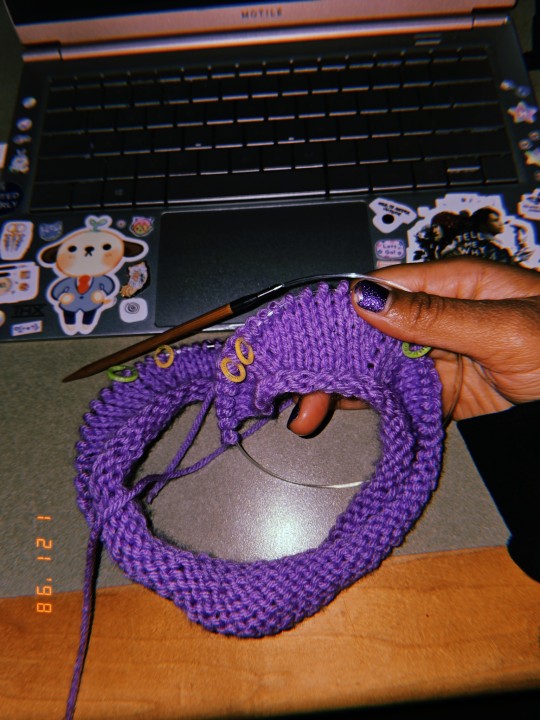
#guards! muzzle her!!!#i used the huji app to get this filter effect!#knitting#I'm following the 'step-by-step cardigan' tutorial by handmade by florence. I'm enjoying it!!!
84 notes
·
View notes
Text
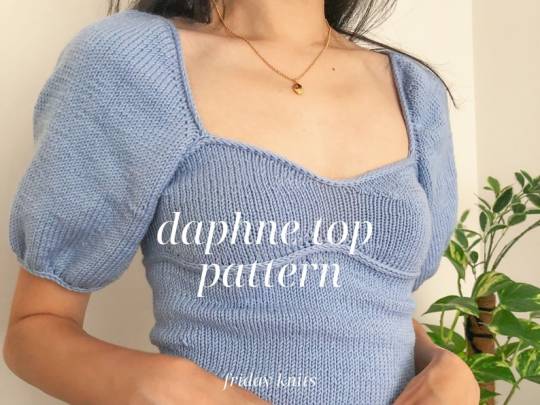

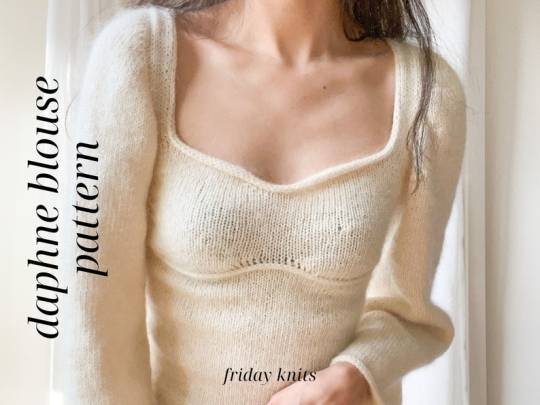
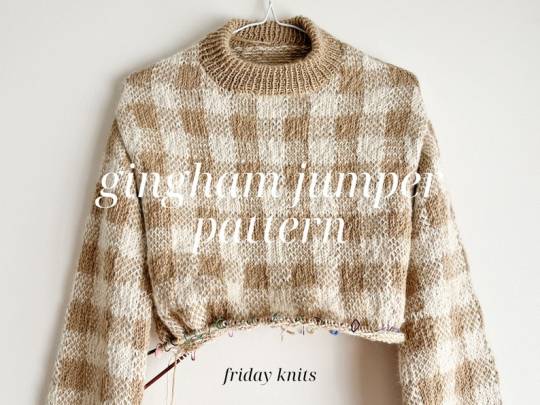

Knitted Tops and Clothing PDF Patterns by FridayKnitsDesigns
#FridayKnitsDesigns#knitting#knitting pattern#knitting pattern pdf#pdf pattern#pdf download#knitting pattern download#knitting tutorial
187 notes
·
View notes